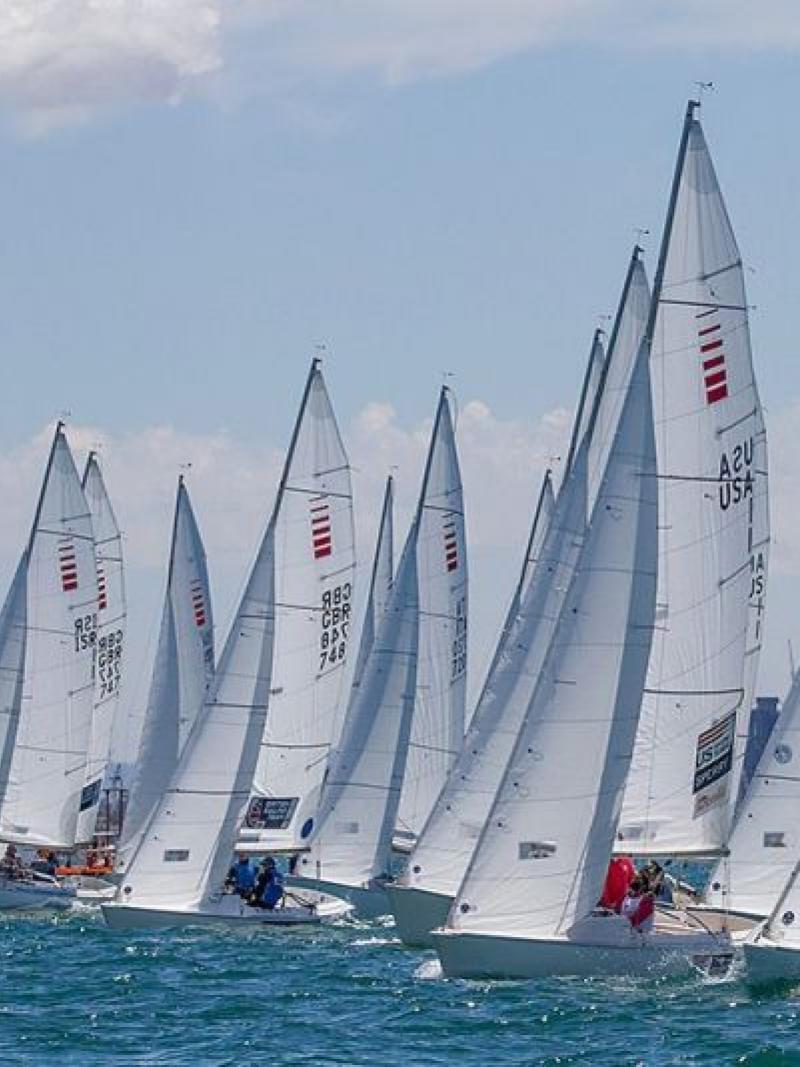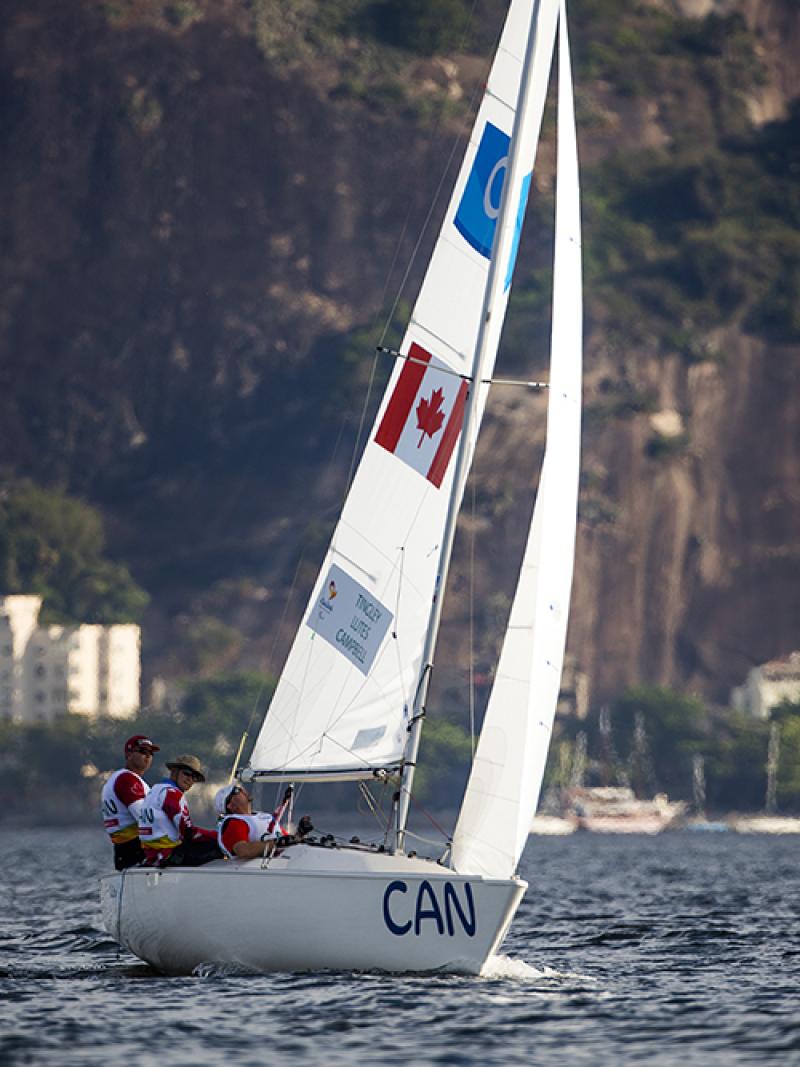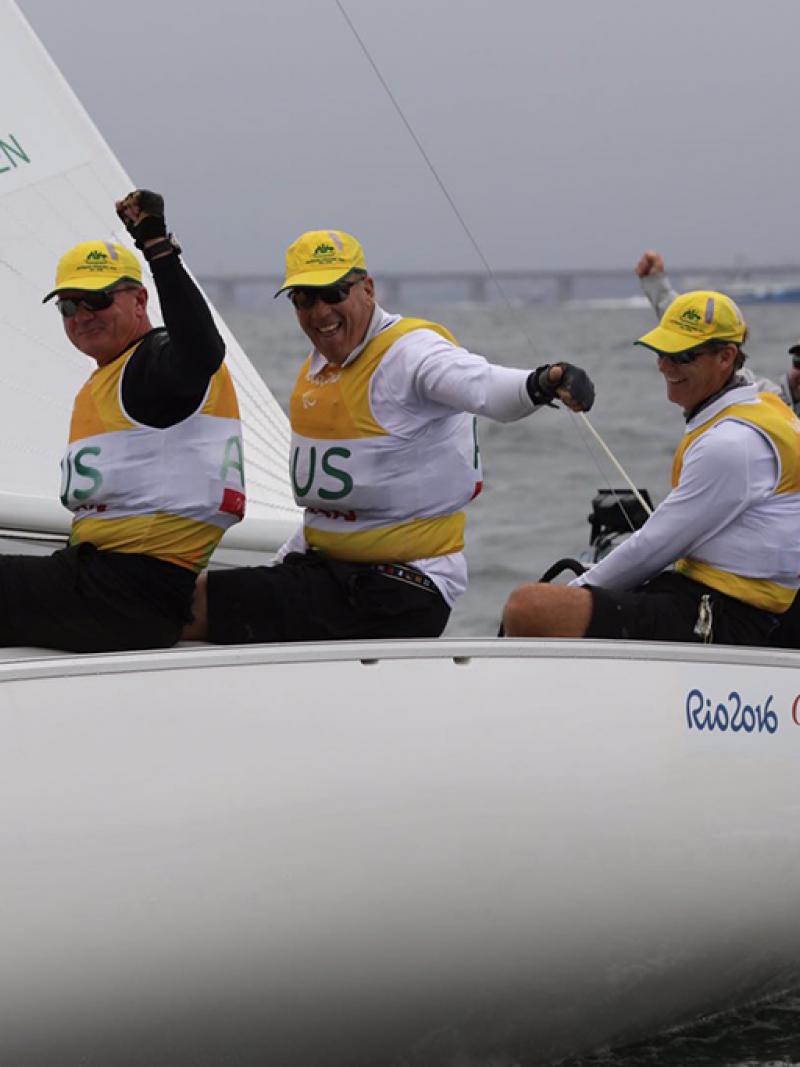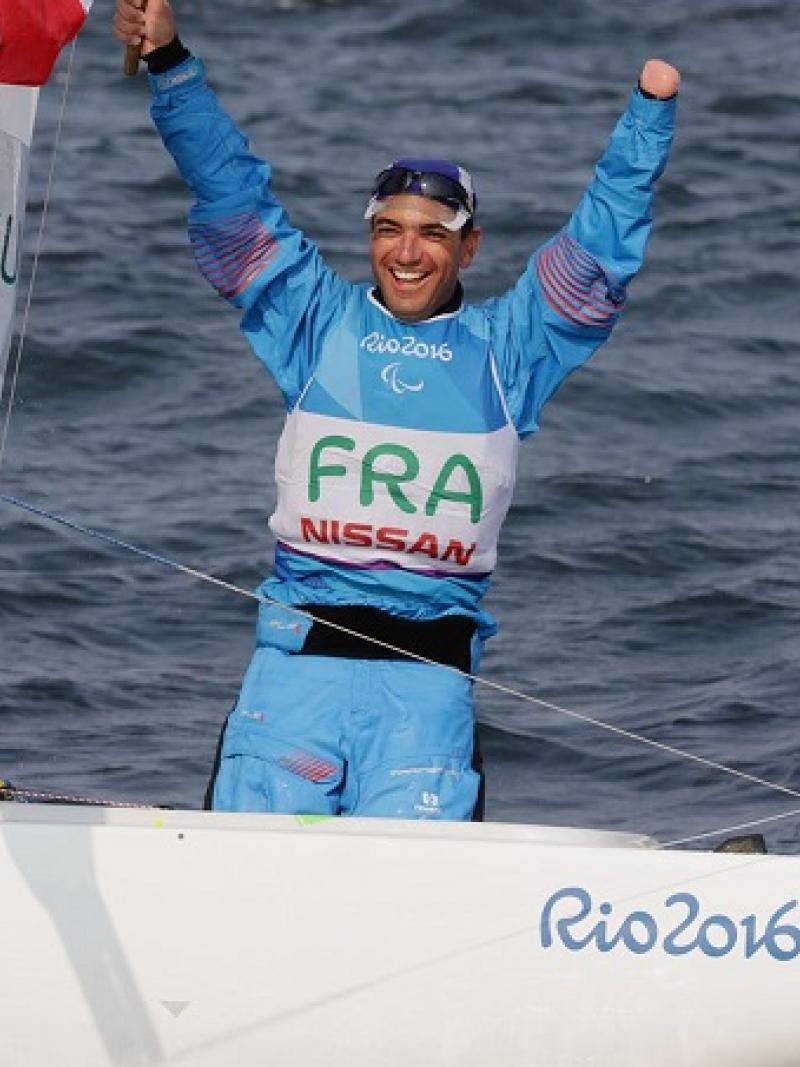Sailing: Five things we learned from Rio 2016
This is what we learned from the sailing competition at Latin America’s first Paralympic Games. 09 Oct 2016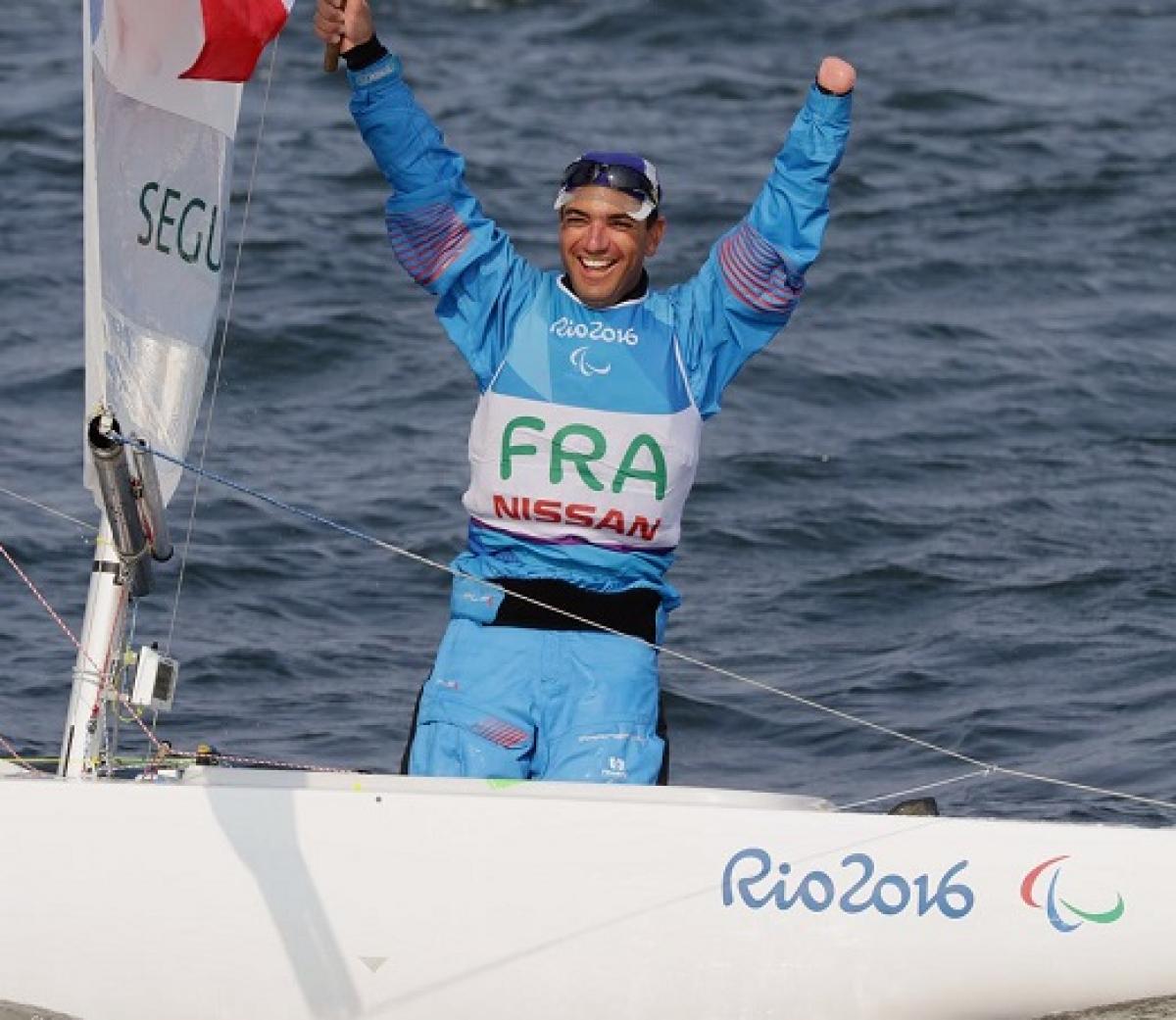
Damien Seguin celebrates winning sailing gold in Rio de Janeiro
With two golds and one silver won, Australia ended as sailing’s most decorated nation at the Rio 2016 Paralympic Games.
Check out five things we learned from the competition:
1. Australia dominated the waters
The two-person SKUD18 and the three-person sonar crews finished way ahead of their rivals to become undisputed Paralympic champions in Rio. And Mathew Bugg added the third medal, a silver in the 2.4m Norlind OD, to round off a brilliant Games for the Australian sailing team.
2. Damien Seguin is back on top
The Frenchman took gold at Athens 2004 and silver at Beijing 2008 but could not medal at London 2012. Last year, however, Seguin proved to be back in form clinching the world title in Melbourne, Australia. He did not disappoint in Rio, winning his second gold ahead of Australia’s Matthew Bugg and Great Britain’s Helena Lucas, respectively.
3. Dan Fitzgibbon and Liesl Tesch repeated London 2012 gold
Since winning Paralympic gold four years ago, the Australian pair has cemented itself as the world’s best in the SKUD18 class. They became world champions in 2014 and 2015 and claimed multiple World Cup titles. Fitzgibbon and Tesch showed outstanding consistency in Rio, finishing first in eight of the 10 races to seal their second Paralympic gold.
4. Paul Tingley won third Paralympic medal
The Canadian has been competing in sailing since the introduction of the sport at Sydney 2000, where he took bronze in the sonar. Tingley could not repeat the podium four years later, but switched to the 2.4m Norlin OD for Beijing 2008 to take his first gold. After finishing fifth in London, in 2012, the 46-year-old went back to the sonar class to seal bronze last September in Rio.
5. Marina da Gloria provided stunning views
The bay lies in sight of the Sugar Loaf and Corcovado mountains, on Rio de Janeiro’s coast, just four miles north of the famous and beautiful Copacabana beach. Both the sailors and the spectators could enjoy not only a thrilling competition but the city’s magnificent views.
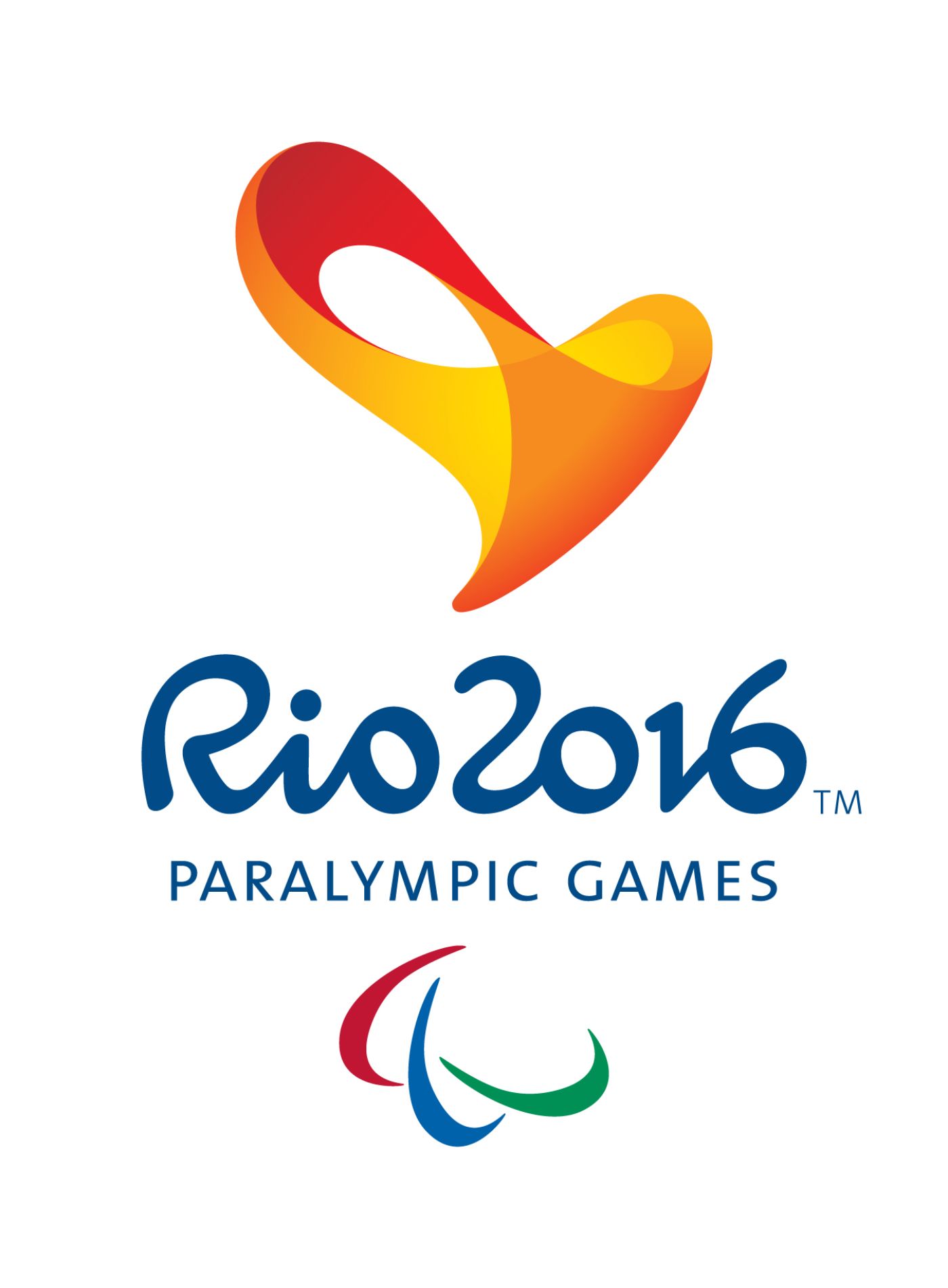
 Facebook
Facebook
 Instagram
Instagram
 Twitter
Twitter
 Youtube
Youtube
 TikTok
TikTok
 Newsletter Subscribe
Newsletter Subscribe

